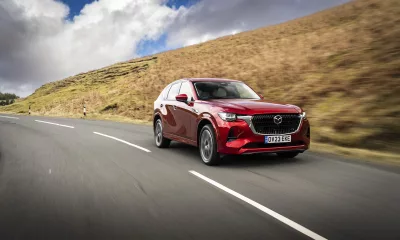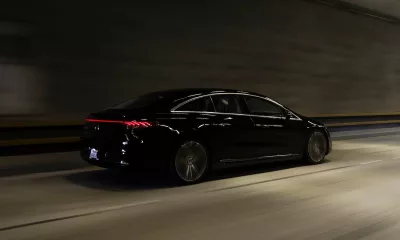The Jazz is back but it has ditched the saxophone connotation and switched to the overseas title of Fit. Styling is familiar to us and akin to previous versions, attractively conservative in execution. On taking the driver’s seat, you are immediately aware of impressive forward visibility. The problem with most modern cars is that the sloping windscreen required for efficient aerodynamics and crash structures means the A-pillar blocks some of your vision.
Ironically, this is a safety concern that Honda has now minimised by splitting the A-pillar in two, decreasing the thickness of the forward element while maintaining overall strength The facia is large, wide and flat. The usual screen pod sits in the upper centre and instrumentation consists of a neat and easy-to-read digital display. Seating is firm but comfortable with reasonable side support and some extra padding compared to the previous generation.

Rear legroom is generous and space utilisation is similar to previous models, which means it’s very good indeed. The real bonus of the Magic-seat configuration has nothing to do with magic, merely great design. Honda places the 40-litre fuel tank in the centre of the car (out of danger) beneath the front seats. As a result, the rear seats can be folded flat, adding 300 litres of extra utility space in comparison with its rivals. The rear seat cushions can also be folded to enable the transport of larger items like potted trees or small furniture. We remain surprised this design has not been copied after all these years.
The days are numbered for radio stations broadcasting on MW (AM), at least as far as motoring goes. Audio systems such as the Fit’s designed overseas have no need for this. Even aftermarket items have only FM. Apple CarPlay and Android Auto are included, however. Touchscreens have received justified criticism as they require the driver to take their eyes off the road to locate small screen areas to press, swipe and prod. Honda has taken the route of insisting the driver presses “OK” to safety instructions on start-up before the display lights up. The screen is not too difficult to use but a few more physical buttons would help.

The previous engine is carried over but has been tuned to produce one extra kilowatt at slightly lower revs with the same torque peak at lower engine speed. More importantly, claimed fuel consumption dropped from 6,00 to 5,50 L/100 km. The transmission is CVT and was standard fitment for Jazz models in the past. We have criticised CVTs often for the engine drone as speed picks up. This led some manufacturers to add steps that simulate gear ratios. Honda skips this trick so there is some drone but it is quite easily excused thanks to the relaxed nature of the powertrain. There are three drive modes on offer. The first two are selected on the gear lever: Drive and Sport. Drive keeps the engine speed at 1 500 r/min in normal driving while Sport raises revs to 2 500 to 3 000 r/min for a bit more schnell. This is seldom necessary as it does result in more engine noise. Then there is an Eco button that softens the accelerator pedal. This is not much different in feel to Drive so it can be used permanently.
The suspension of the Jazz used to be surprisingly sporty, erring on the side of choppy at times, but that has all changed in the Fit. The ride is comfortable and allows some decent cornering ability … a satisfying improvement in all departments. Electrically assisted steering continues to progress and the Fit’s system, along with the excellent steering wheel donated by the Honda e EV, felt seamless and well weighted.

Test summary
The new Honda Fit is a definite upgrade on the previous model – already a well-packaged and wonderfully judged supermini – and it is sure to do well, even with the multitude of capable competitors on the market. As befits the Honda brand, a hybrid is included in the range. In fact, our last three Jazz road tests (2003, 2011 and 2015) were the hybrid versions. The only downside of the hybrid is the additional outlay of R80 000. That’s the equivalent of roughly 5 000 litres of fuel … it will take more than a decade to recoup that back with better fuel consumption.
Price: R389 900
0-100 km/h: 10,73 seconds
Top speed: 180 km/h
Power: 89 kW
Torque: 145 N.m
CAR Fuel index: 6,60 L/100km
CO2: 132 g/km












